Known for its medieval towns, renaissance architecture, still-working windmills, and national delicacies such as Moules- frites, Belgium’s appeal extends across its physical and cultural landscape. The country is also a geo-political focal point, being home to both the headquarters of the European Union and NATO. Meanwhile the country’s fractured history has given rise to distinct regions where the languages vary from French to German to Dutch.

The picturesque town of Dinant by night (Photo: Maison du Tourisme Vallée de la Meuse Namur-Dinant)
Venture beyond the urbanised centres of Brussels and Bruges and some of Europe’s most charming small towns and villages await you, many of which still remain (for now, at least) delightfully untouched by mass tourism. Below, in alphabetical order, is our pick of 12 of the most charming towns with populations under 30,000 that Belgium has to offer.
Bouillon
Dominated by an impeccably preserved 8th-century medieval castle that looms large over the town, Bouillon is at the heart of a broader landscape that’s awash with dark forests, ravines, steep hills and cliffs – all dotted with castles, abbeys and tales of yore. Located in the Semois Valley in the Ardennes region of southern Belgium, a short hop from the French border, the town is an outdoor lover’s dream, with numerus walking paths and cycle-tracks. For hard-earned refreshments, the acclaimed brewery of Bouillon runs daily beer sampling tours, and there are also enticing patisseries and several excellent restaurants.
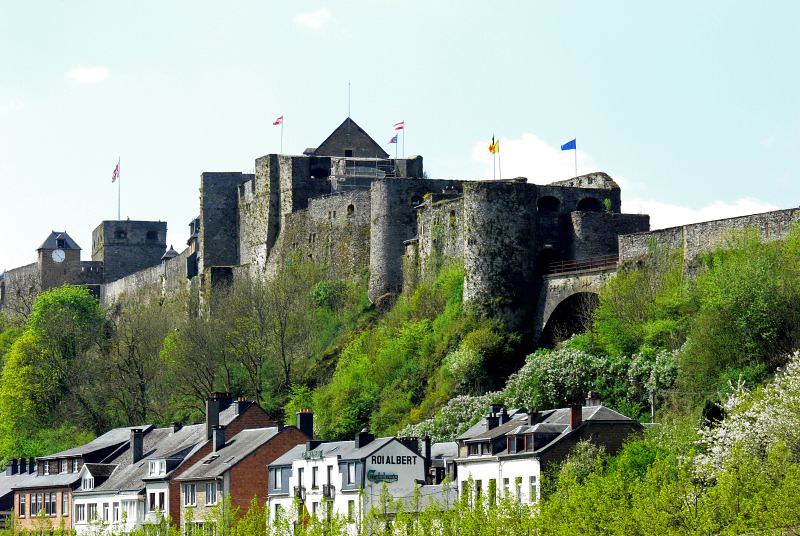
The medieval Bouillon Castle looks over the town (Photo: John Van Nijen via Flickr)
Crupet
Amid the green valleys of Wallonia’s Condroz region is this picture-postcard riverside village, where the Grotto of Saint Anthony of Padua, complete with its 22 religious statues, stands as the most prominent landmark. Following closely is a 13th-century castle, medieval dungeons, and small farmhouses made of centuries-old sandstone or whitewashed limestone. A short stroll from the delightful cobbled streets of the village centre soon brings you to former mills, yards, and enchanting gardens.
Damme
For visitors to Bruges, the nearby town of Damme makes for an excellent cycle ride, offering the chance to enjoy some quintessential Belgian countryside without having to travel too far. Once here, it’s worth taking a look around this laid back town, which dates all the way back to the 13th century but today has numerous great restaurants and bookshops, as well as alluring picnic spots along the canal and meadows. Strolling along the star-fort moat that once protected the town from invasion and taking a look around a fully operational windmill provide further glimpses into Damme’s enduring fusion of its present and past.
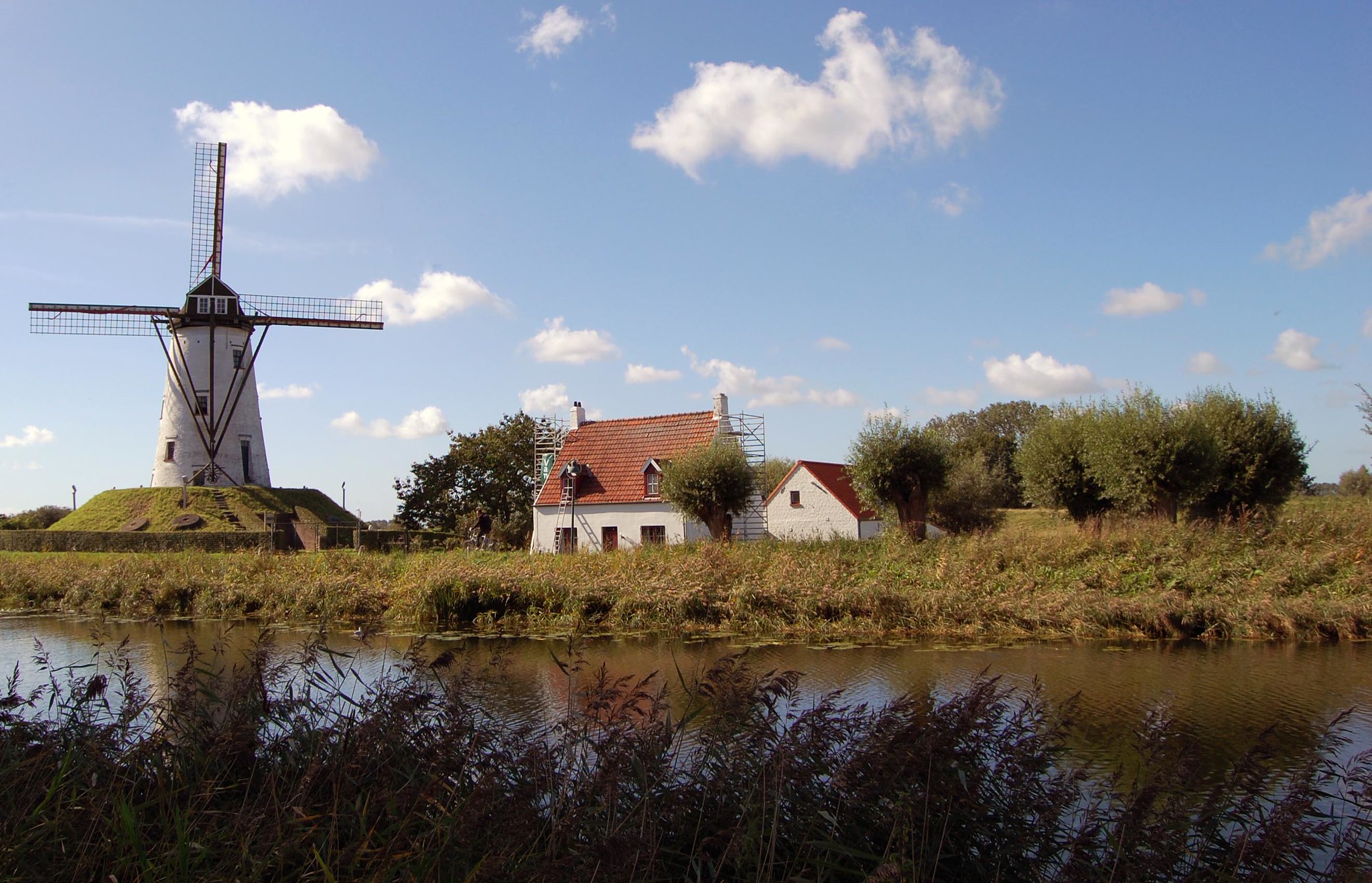
A quintessentially rustic scene in Damme (Photo: Vicuna R via Flickr / CC BY-SA 2.0)
De Haan
Perched on Belgium’s northern coastline, this popular seaside village attracts significant numbers of visitors during the summer months. Despite the regular influx of tourists, the village has retained much of its original character and charm, most notably the well-preserved architectural styles seen in its belle epoque buildings and eye-catching white villas. Inevitably the beach is the beating heart of the village, and where locals come to play beach ball, build sandcastles, go swimming, or cycle along the restaurant-lined promenade.
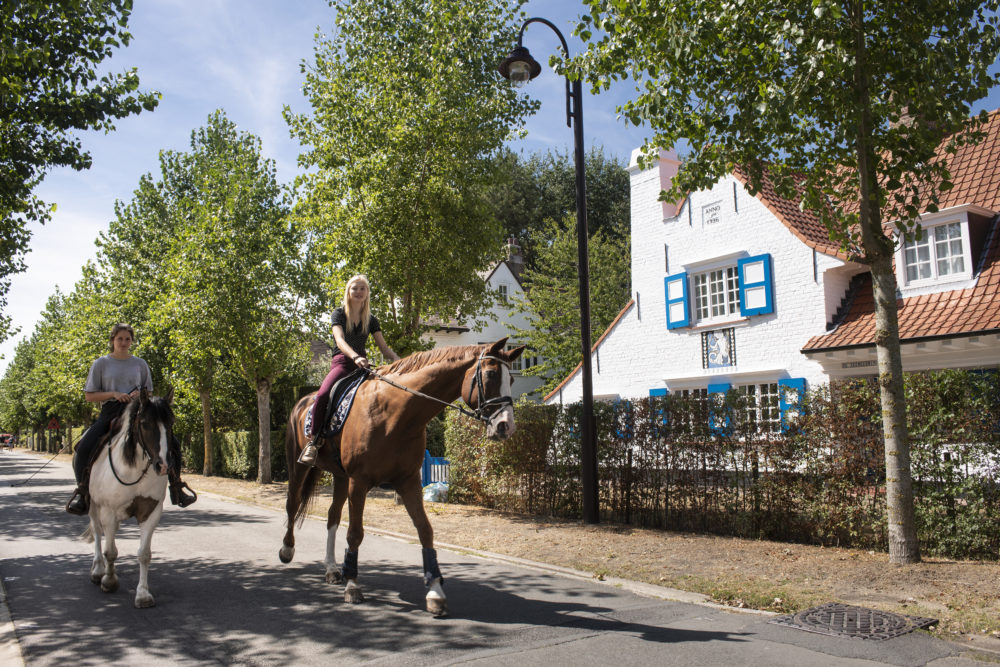
Two people ride on horseback through De Haan (Photo: dehaan.be)
Dinant
Situated along the wild and winding Meuse River, the little town of Dinant is regularly featured on postcards of the region owing to its aching prettiness and fairytale-like cliff face setting. Here, the gothic-style Collégiale Notre-Dame de Dinant, with its distinctive pear-shaped bell tower, serves as a breath-taking beacon on the landscape. Elsewhere in the town, a sprinkling of picturesque buildings and a fortified citadel housing an Arms Museum contribute to the aesthetic and cultural charm. As a quirky aside, among Dinant’s former residents was the inventor of the saxophone, Adolphe Sax, with his house open to curious visitors to this day.
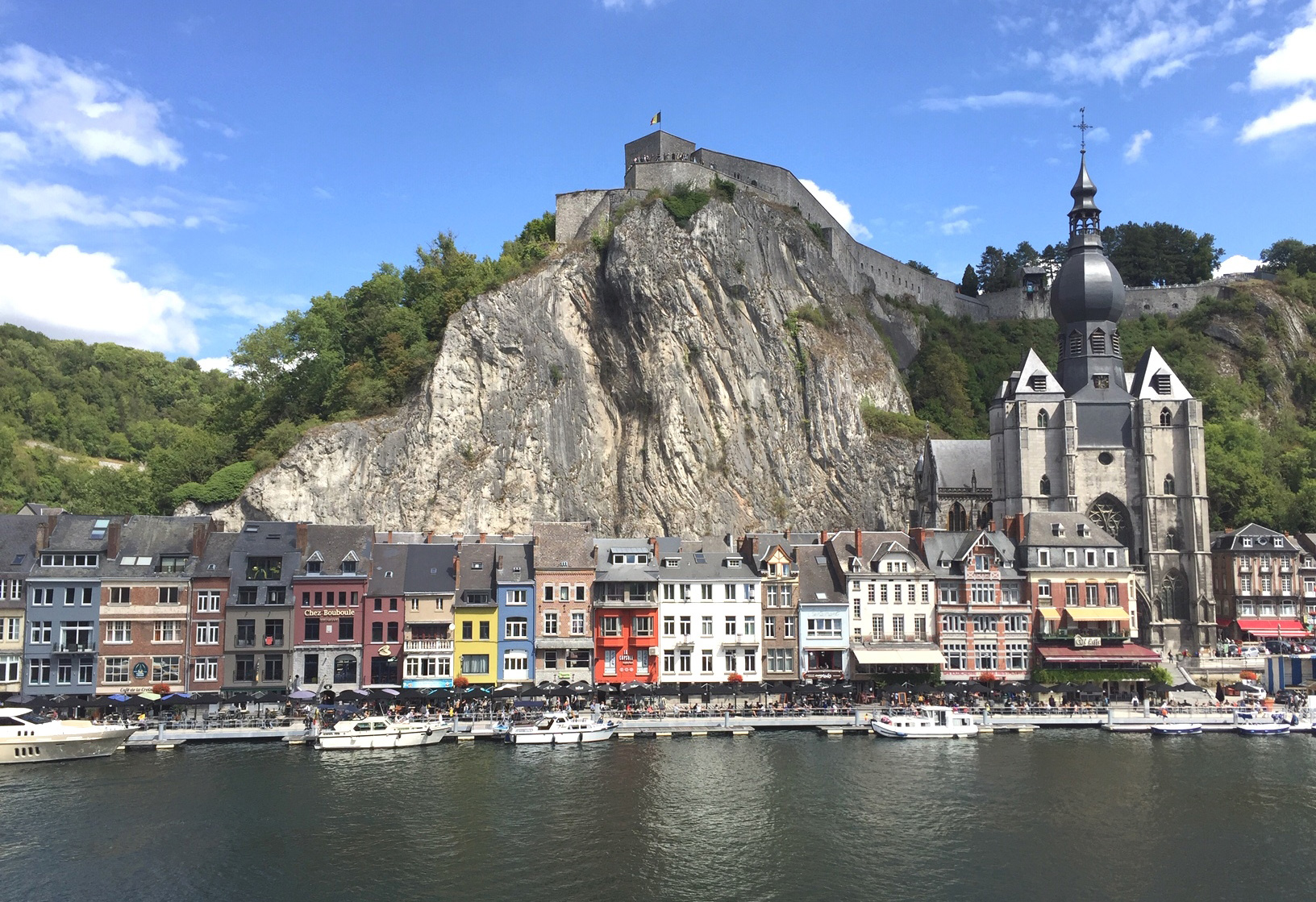
A colourful row of buildings backed onto a dramatic cliff in Dinant (Photo: Maison du Tourisme Vallée de la Meuse Namur-Dinant)
Durbuy
Dating back to the 17th century, Durbuy would make an ideal visual representation of the phrase “small but perfectly formed”. In fact, situated on a clifftop in the densely forested Ardennes region, and overlooking the Ourthe River Valley, the town is thought to be the smallest anywhere on earth. Beyond this geographical quirk, the town is certainly big on character, with the cobbled streets and meandering alleyways of the medieval old town a pleasure to amble through, while for more energetic pursuits there are endless hiking and mountain biking routes to be found across the town’s bucolic surroundings.
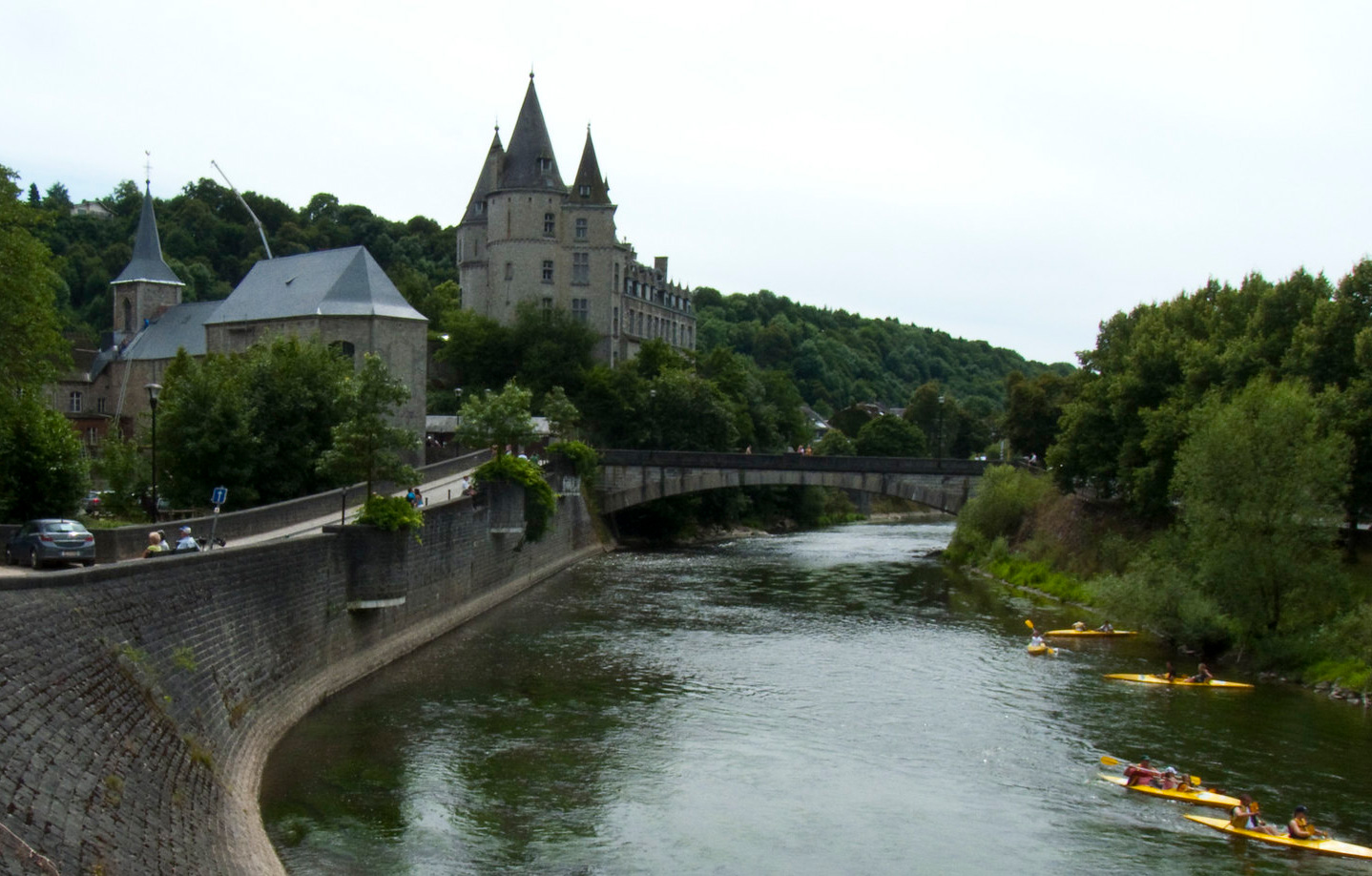
The Ourthe river flows through the town of Durbuy (Photo: kismihok via Flickr / CC BY-SA 2.0)
Malmedy
A captivating blend of old and new, Malmedy’s history can be explored at the town’s impressive museum, built on the site of 7th-century abbey. Positioned in a deep wooded valley in the Ardennes region, the town is also a popular starting point for bracing walks into the local wildernes, as well as being on the RAVel cycle network, made up of more than 1,350 kilometres of greenways on old railway lines and canal towpaths. There’s also a popular family-run microbrewery showcasing the best in Belgian beers and each year the town’s streets play host to a Lent carnival.
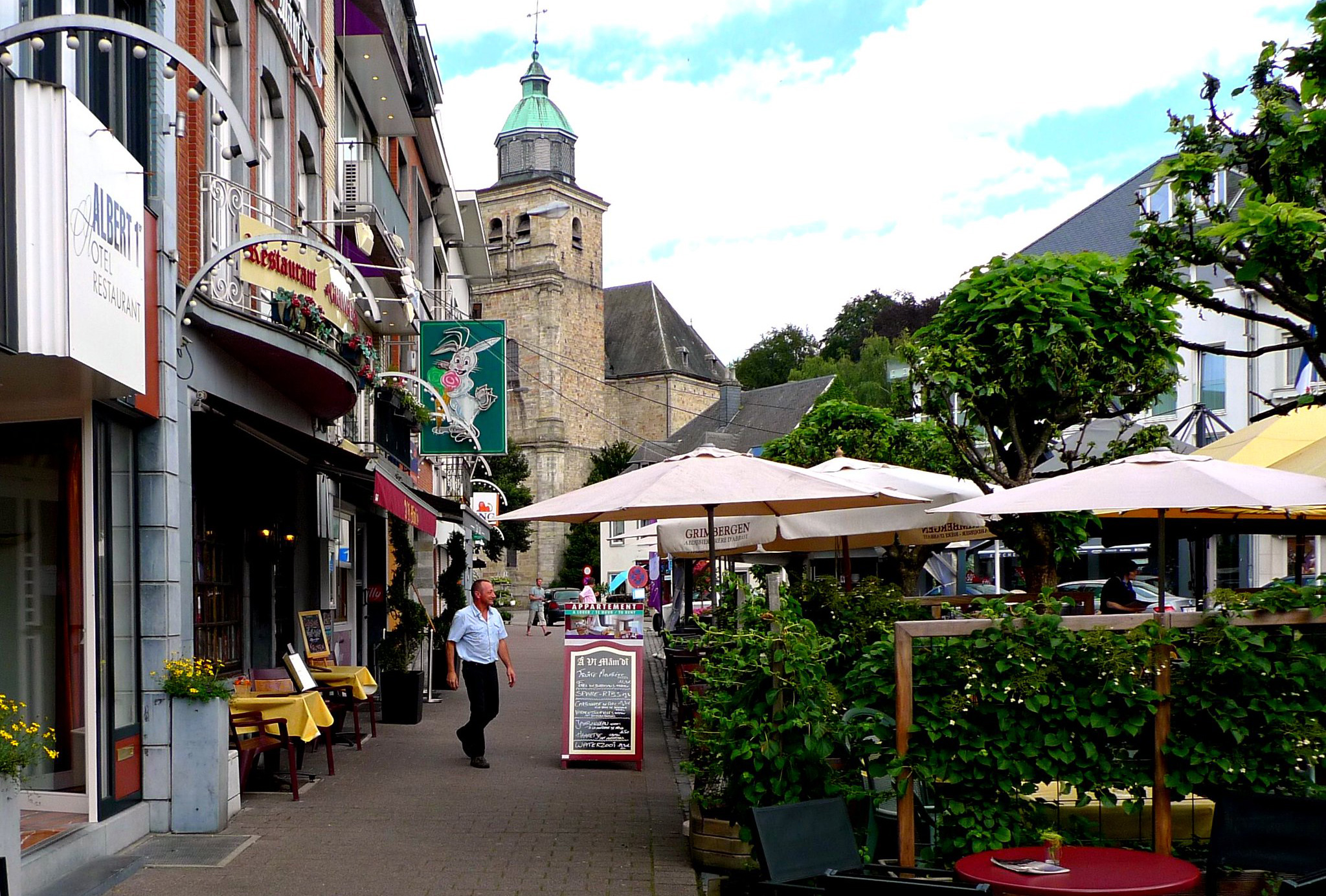
Seating in front of cafes in central Malmedy (Photo: zoetnet via Flickr / CC BY 2.0)
Oud-Rekem
The Dutch-speaking region of Flanders in northern Belgium is dotted with picture-perfect chocolate box villages, but ask those acquainted with the area for the most beautiful and more often than not Oud Rekem comes out top – and for good reason too. Filled with narrow winding streets and various enticing nooks and crannies, the scenic village has something of a movie set-like quality. There’s a magnificent moated castle to lend grandeur to the village’s otherwise quaint look and feel, plus a distinguished concert hall and a historic 17th-century apothecary said to be one of the oldest in Belgium. Meanwhile spiralling out from the centre into the village’s pastoral surroundings are several popular walking and biking routes.
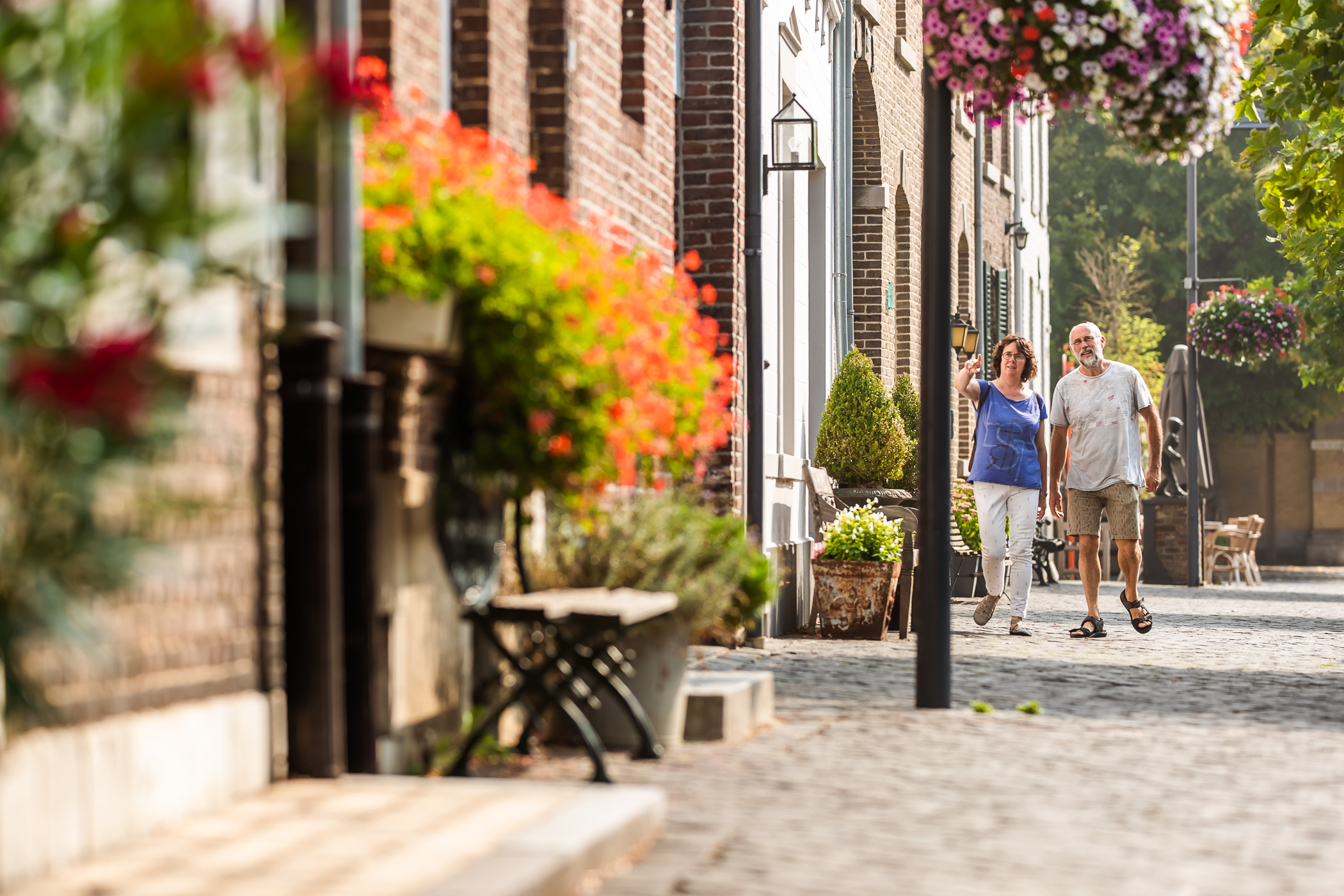
A couple walk along a cobbled street in Oud-Rekem (Photo: Visit Lanaken)
Rochefort
The birthplace of the eponymous cheese, Rochefort is a renowned foodie destination, and is also well known for its Trappist beer, brewed just north of the town in the Notre-Dame de Saint-Remy. The remains of the town’s medieval castle, built on rocky outcrop, never fails to catch the eye, and several other notable historic landmarks can be explored on a tourist train that runs during the summer season. Venture outside Rochefort to the surrounding area and you’ll soon reach several limestone hills hollowed out to create a labyrinthine of mesmerising caves.
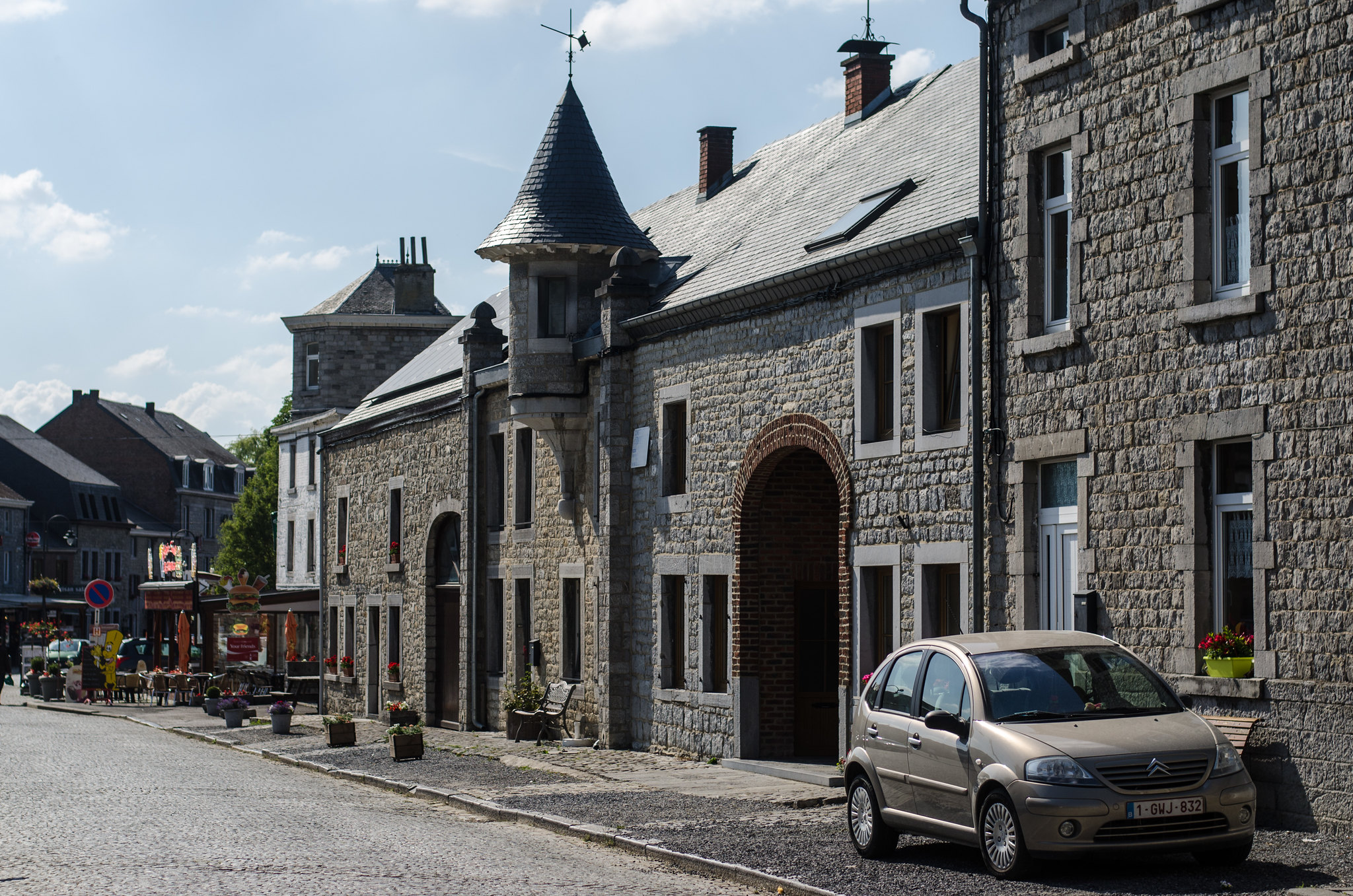
A street in Rochefort (Photo: Arseni Mourzenko via Flickr / CC BY 2.0)
Spa
Despite its memorable name, the town of Spa in Belgium’s Ardennes region has never been a particularly big draw for overseas visitors. Perhaps best known for the nearby Grand Prix racing circuit and for lending its name to the popular mineral water, it is, however, a haven for Belgian natives who come to the town to enjoy its mineral-rich thermal swimming pools, geysers and bubbling water cannons – all of which are thought to offer significant therapeutic benefits. The Rhenish-Romanesque-style stone Church of Notre Dame and St. Remacle add to the visual appeal.
Torgny
As a nation, it’s fair to say that Belgium isn’t known for its wine-making prowess, but the exception is the village of Torgny. Situated in the Gaume region of Wallonia, at the southernmost point of the country, the village’s 200-plus residents lay claim to their very own microclimate which makes it one of the best spots in Belgium for growing grapes. But the verdant orchids and vineyards that surround the village aren’t Torgny’s only attractive feature – there are also pretty streets lined with picturesque ochre-coloured sandstone cottages topped by red-tiled roofs, two local farms, and even its own Michelin-starred restaurant.
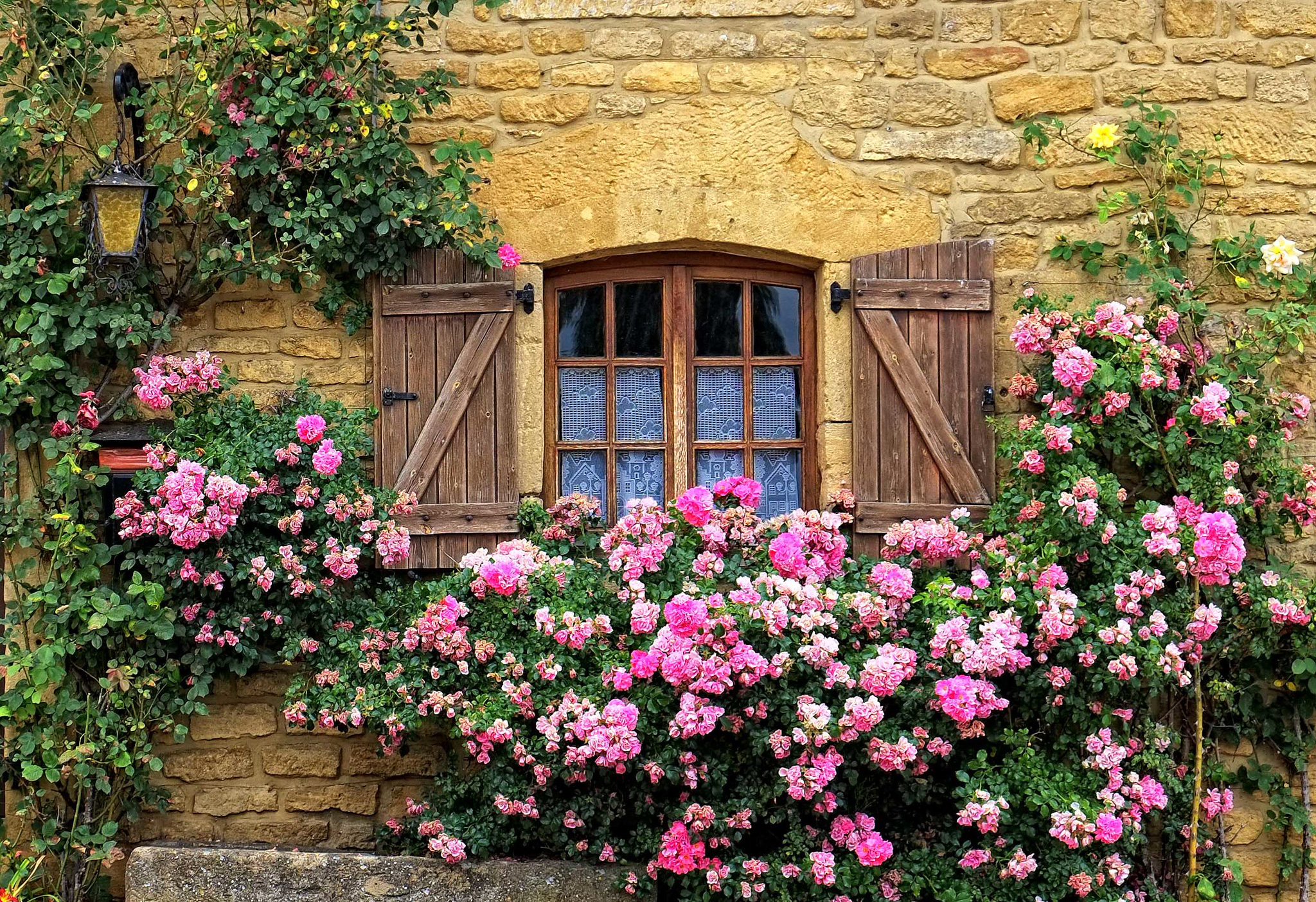
The wall of a building in Torgny bedecked with colourful flowers (Photo: Eric Huybrechts via Flickr / CC BY-ND 2.0)
Waterloo
Sitting a short distance south of Brussels, the historical capital of Belgium is best known for the famous battle named after it, and many of the things to see and do here have a connection with Napoleon’s denouement. Among them is The Panorama, a large round building housing a panoramic painting depicting the Battle of Waterloo. But the town is a lot more than a mere playground for history buffs – it’s also home to some important and well preserved areas of natural beauty. The Sonian Forest UNESCO World Heritage Site in the town’s northeast borders contains several trees more than 200 years old, while inside there’s a museum presenting displays about the flora, fauna, history of the area. For nocturnal pursuits, in the heart of the town is a bustling casino complete with a striking glass cupola in the main games hall.
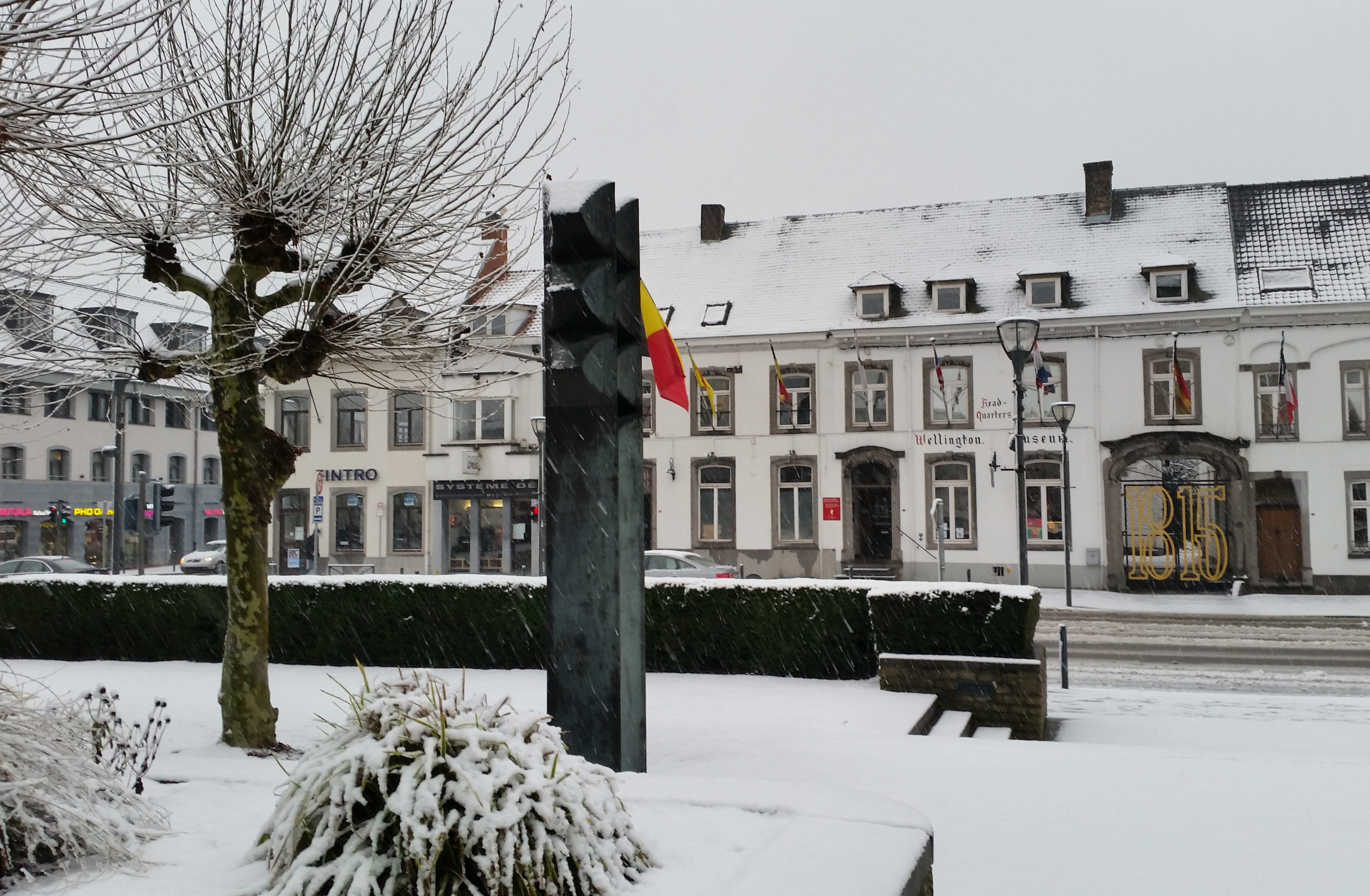
A snowy scene in Waterloo (Photo: waterloo-tourisme.be)
.